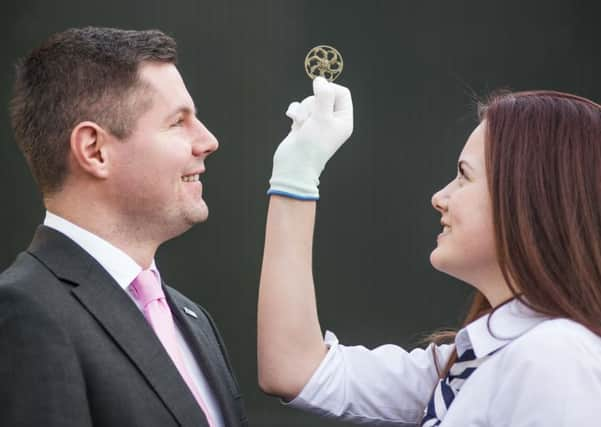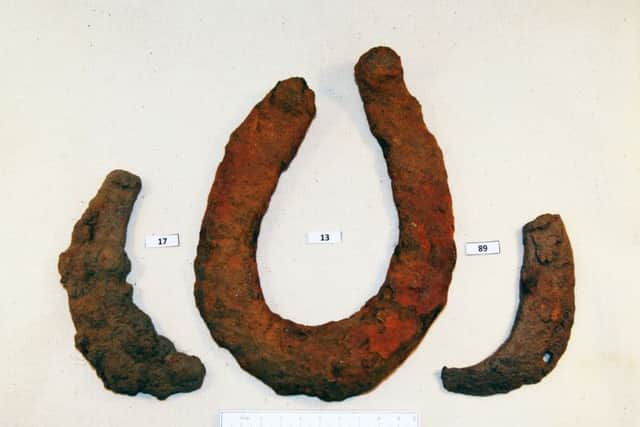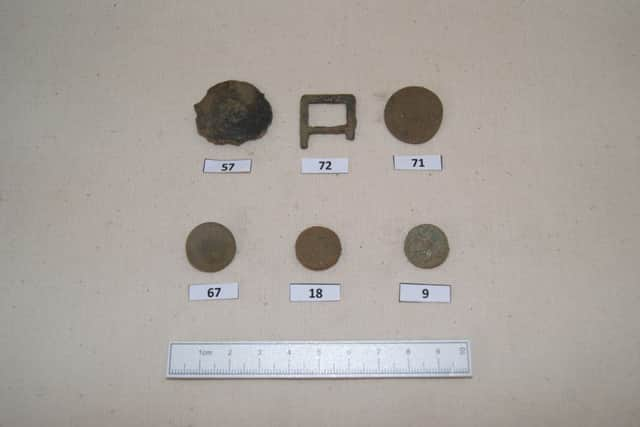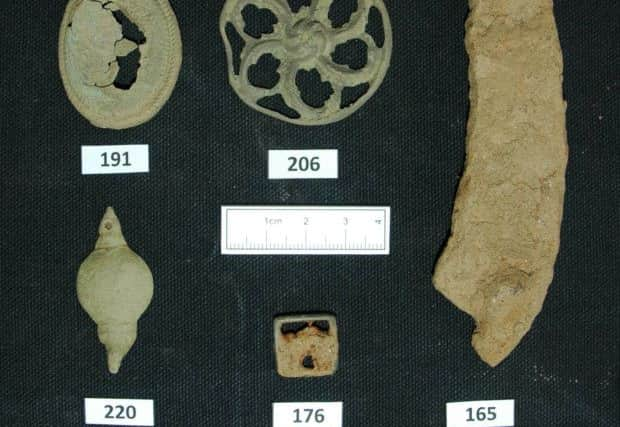Dozens of Battle of Killiecrankie artefacts unearthed at A9 roadworks


Relics related to the 17th century Battle of Killiecrankie have been found following an extensive archaeological survey of part of the Perthshire landscape where the bloody skirmish unfolded.
A team of experts who deployed metal detectors to help make the discoveries believe they will help improve understanding of one of the key episodes in Scotland’s military history.
Advertisement
Hide AdAdvertisement
Hide AdMore than 40 musket munitions, part of the support for a sword belt, two buckles, horse shoes, fragments of a bangle and buttons were among the items found during a lengthy search which began last summer.


• READ MORE: First grenade found at Killiecrankie
They have been recovered from part of the battlefield site where the new road will be constructed, near the Pass of Killiecrankie, a spectacular beauty spot north of Pitlochry.
The research - carried out ahead of work on the new A9 between Killiecrankie and Pitagoran - was led by Glasgow-based Guard Archaeology and also involved Glasgow University’s Centre for Battlefield Archaeology, Detecting Scotland and the Scottish Artefact Recovery Group.
The Battle of Killiecrankie - the initial conflict in the first Jacobite Rising - was fought on 27 July 1689 between Jacobites loyal to King James VII and II and troops supporting the Protestant King William.


The Jacobites, led by John Graham of Claverhouse, who became known as “Bonnie Dundee,” were mainly Highland Scots gathered by the clan chief Cameron of Lochiel. The Government troops were under the command of General Hugh Mackay of Scourie.
• READ MORE: First grenade found at Killiecrankie
The Jacobites held a strong position on a hilltop and waited for the sun to set behind the Government troops before they charged, smashing into the centre of their lines, forcing General Mackay’s troops to falter and flee. The Jacobites won the battle, but a third of their number were killed, including “Bonnie Dundee,” who became ahero figure.
Transport minister Derek Mackay said: “Our work to dual the A9 will bring undoubted improvements for road users and will allow us to refine our road designs for the future, but has also opened a window into Scotland’s past.


“Experts are shedding more light on the battle, bringing Bonnie Dundee’s victory to life, and are able to offer more information on the possible routes soldiers took during the battle, potential cavalry positions and a likely retreating route taken by the fleeing Government forces.”
Advertisement
Hide AdAdvertisement
Hide AdWarren Bailie, project manager at Guard Archaeology, said: ”The recent metal detecting survey on the Killiecrankie Battlefield, one of the best preserved in Scotland, has revealed exciting new evidence to back up the earlier findings of archaeological work carried out in 2003.
“We and our partners involved in the survey have enjoyed working on such an iconic, nationally-significant battlefield site and playing a part in helping improve our understanding of this important event in Scotland’s past.”
• READ MORE: A9 works will involve Killiecrankie treasure hunt